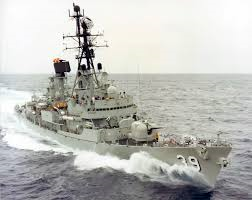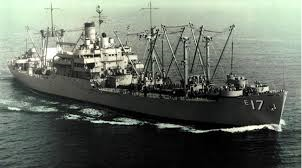By Ed Timperlake
Joint By Design, The Evolution of Australian Strategy is a very important new book by Robbin F.Laird.
As the author sagely points out in his preface that “this book although focused on Australia, is not just about Australia.”
There is a strategic shift underway as land wars are left behind and alliance forces refocus on the Peoples Republic of China’s modernization and even mobilization of all aspects of the Peoples Liberation Army.
Please do not let the term “army” lose sight of the growth of a real threat facing Australia, America and other Pacific rim countries and even India.
They put “army” in front of other services, the PLAN or Navy, PLAAF or Air force, and the 2nd Artillery with ever increasing ICBM and IRBM missile forces all beginning to sound General Quarters or simply get ready for combat.
The insights in the book, backed by direct evidence of a country and their National Security leaders with typical Australian courage in facing hard truths, is building out military force united in purpose using the most current combat platforms available combined with a strategic and tactical communication vision that pulls it all together to become the most platform for platform modern combined fighting force in the world.
Brilliant hard work went into making important acquisition decisions every step of the way and Joint by Design gives full credit to visionary leaders.
In reviewing the book I can make a very personal observation that is so important today about an Australian Navy ship known as the mighty Hobart fighting together with the American 7th Fleet in Vietnam waters in 1968.
I learned a very important lesson that is an echo from history that must always be remembered as a lesson learned in putting together complex military engagements and what is often called “the fog of war.”

HMAS Hobart DDG 39 was a true navy surface action gunfighter.
History reports that on 13 and 14 June 1968 in a running gunfight against NVA costal batteries the HMAS Hobart knocked out one gun while collecting shrapnel from their upper-deck in the exchange.
Now that is truly “guns guns guns” combat.
Sadly soon after that successful dueling gun fight tragedy struck in the dark hours of June 17 when HMAS Hobart’s crew detected incoming air and marked it as friendly.
However, it soon became one of the ugliest “friendly fire” mistakes at sea during the entire Vietnam war.
A section of USAF Phantoms let fly with their Aim-7 Sparrows without doing a visual identification (VID).
The Aim-7 is a semi-active AA missile that requires a lock on until impact.
The surface movement of ship can give a radar lock in the cockpit but without an “eyeball” VID the missile payload once fired has no idea if it is a ship or low flying attack or recon helicopter.
A failed human operator with bad intel created this tragedy.
In one respect the HMAS Hobart was fortunate that one of the missile warheads did not explode.
However, the missiles killed and wounded members of the crew.
Showing courage and skill under fire HMAS Hobart managed to get off five rounds of 5in shells as the Phantoms left.
The lesson of this incident rings forward from over half a century ago and is extremely important as the U.S., Australia and other Allies begin to “train train train” to forge scalable “kill webs” to fight and win any Pacific engagement.
The attack on the HMAS Hobart cannot be written off simply as a ’fog of war” or a tragic friendly fire incident.
It was much more; it was a gross deadly failure of tactical and strategic intelligence.
How do I know because I was present afloat also on the gun line serving as a Naval Academy Midshipman serving on the Fleet Amo ship the USS Great Sitken, AE-17, and after the incident, we also tied up in Subic Bay when the HMAS Hobart made port to assess damage.

Leading up to the attack, all elements of the 7th Fleet and 7th AF were receiving flash traffic that the North Vietnamese were running helicopters up and down their coast at night.
Such important actionable intelligence put all units on extra vigilant air defense combat alert.
What was not known at the time because it was kept highly classified (or even worse simply American cowboy time) that the helicopters were actually CIA missions more than likely flown by their secret AF “Air America.”
It must always be noted there is always a key challenge facing force integration, namely ensuring that the intelligence that is shared provides for a common perspective.
In trying to forge together an effective modern combat force taking full advantage of revolutionary 21st Century ability to fight at the speed of light for target acquisition and target engagement to have the best payload effectiveness to kill the biggest threats working at cross purposes can defeat the allied force.
I learned this at a very young age; there is something worse than no intelligence and that is bad intelligence.
Australian leaders know this and there is a graceful end that tells me Australia is still such a U.S. special ally.
Years later as a Presidential Appointee Envoy for President Bush (41), I represented America at the dedication of the Australian Vietnam Veterans Memorial.
After Annapolis I qualified as a Naval Aviator and USMC Fighter Pilot and returned to SEA in 1973 serving as a squadron pilot in Task Force Delta trying to stop the Khmer Rouge from overrunning Cambodia.
With the U.S. Congress ending all combat support on Aug 15 1973, the Cambodian killing fields began.
It was a very dark time, but years later my visit to Australia gave me great hope for the future.
With the never to be forgotten beat of a Huey flying out of the mist while every family who had lost someone during the Vietnam War marched in front of the dedication parade carrying their National Flag while the band played “Waltzing Matilda, it was a moment in time never to be forgotten.
I managed to find some of the sailors who served on HMAS Hobart many with families present.
The pride they expressed in serving on HMAS Hobart with the 7th Fleet was so evident.
The war was over for all and healing had taken place but a tragic mistake had been paid for in blood.
The battle damage of HMAS Hobart after the “friendly fire” incident is seen in the featured photo.
Robbin Laird visited the new HMAS Hobart in Sydney Harbour in 2018.
Visiting HMAS Hobart: A Key Building Block in the Remaking of the Royal Australian Navy
Joint by Design: The Evolution of Australian Defence Strategy


